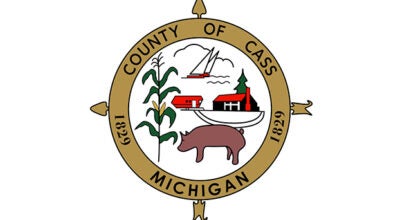Area drug teams give update on recent efforts
Published 8:00 am Thursday, February 15, 2018
CASSOPOLIS — While the nation’s focus has turned to the fight against prescription opioid addiction in recent months, on the streets, area drug teams are tackling familiar threats — methamphetamine, cocaine and heroin — which continue to pour into local communities from south of the country’s border.
Tim Blanksvard, with the Southwest Enforcement Team, and David Toxopeus, with the Cass County Drug Enforcement Team, shared the issues they continue to face within Berrien and Cass counties during their presentation at the latest CASS Community Coalition meeting Thursday in Cassopolis. The two shared their dealings with street-level drugs — much of which is coming into the local area from Mexico — and answered questions about what they are facing from members of the anti-drug task force, which is comprised of local law enforcement, medical personnel and members of Woodlands Behavioral Healthcare Network, among other agencies.
Blanksvard said that members of SWET — a narcotics team that operates in several counties in southwest Michigan — still mainly contends with methamphetamine abuse, the drug that is “still king right now,” he said. Over the last several weeks, officers have encountered a new, blue-colored meth — similar to the type featured in the popular TV series “Breaking Bad” — which dealers are claiming is more potent, though lab reports have not confirmed that fact, Blanksvard said.
The local street price of meth has also fallen dramatically, just over the past year, Blanksvard said.
“When I started on the team, we knocked off a guy hauling 23 pounds [of meth],” he said. “He was trying to sell that for $250,000. Now, you can buy that 23 pounds for $60,000.”
The price drop is due to the increased presence of Mexican-made methamphetamine, which is produced in super laboratories and smuggled into the United States. Toxopeus said that many families, which for generations transported marijuana across the border, have been convinced by cartels to take harder drugs such as meth and heroin with them as well.
As a result, Mexican crystal meth has all but supplanted that coming from local methamphetamine laboratories, Toxopeus said.
“A year to a year and a half ago, we were doing nothing but busting meth labs,” he said. “I’ve seen one in the past year.”
Powdered cocaine has also began to make a resurgence in recent months, which Blanksvard said was due to new partnerships between Colombian cocaine manufacturers and Mexican drug cartels, which have resolved previous feuds to start importing the drug into the United States.
“We saw almost no cocaine for almost two years, and now it’s slowly creeping back up,” he said. “We are getting kilos and half kilos, and a lot of ounces, where if you had even a few grams in the past it was unusual.”
Heroin is also an ongoing problem, Blanksvard said. At the moment, officers are finding Mexican-made brown heroin, about half of which is laced with fentanyl — increasing the likelihood of a user overdosing on the substance.
At the moment, the drug is mainly affecting communities in Berrien County, though that is no reason to believe it will not be hitting Cass in greater numbers in the future, Toxopeus said.
“Cass County has always been, historically, behind the trend,” he said. “Everybody around was using meth, and we weren’t. [Meth] eventually overtook us. If everyone around us is using heroin, then it’s coming.”






